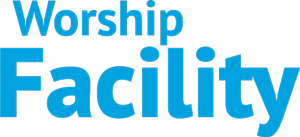Are you a ministry leader considering using YouTube videos in your church services? Before you hit play, it’s crucial to understand the legal and moral implications of YouTube use in churches. This guide will help you navigate copyright laws and maintain integrity in your visual media practices.
Why YouTube is Not Intended for Church Use
In the digital age, YouTube has become a go-to platform for accessing diverse content, including inspirational sermons and worship music videos. However, many ministry leaders may not realize that YouTube is designed for personal use only and should not be used in group settings like church services or events.
Legal Considerations for Using YouTube in Churches
YouTube’s Terms of Service
YouTube’s Terms of Service (ToS) explicitly state that the platform is for personal, non-commercial use. Users are granted a limited, non-exclusive license to access and view content solely for personal purposes. Displaying YouTube videos in a public or group setting, such as a church service, violates these terms.
Copyright Law and Church Services
Copyright law protects the rights of content creators and owners, giving them control over how their works are used and distributed. When a church uses a YouTube video during a service or event, it’s effectively performing a public display of that content. Without proper authorization or licensing, this constitutes copyright infringement. This can lead to serious legal consequences, including fines and legal action from content owners.
Moral Ramifications of Using YouTube Content in Churches
Respecting Content Creators
As ministry leaders, we’re called to uphold ethical standards in all aspects of our work, including how we use and share content. Using YouTube videos without permission not only violates legal standards but also disrespects the creators who invested time, effort, and resources into producing that content.
Setting an Ethical Example
Church leaders serve as role models for their congregations. By using content in a manner that respects legal and ethical boundaries, you set a positive example for your ministry community. Demonstrating integrity in the use of visual media reinforces the importance of ethical behavior and respect for the law.
Alternatives to YouTube for Church Visual Media
Obtaining Proper Licenses and Permissions
To use visual media in church settings legally and ethically, it’s essential to obtain the necessary licenses and permissions. Here are some steps ministry leaders can take:
1. Purchase Licenses: Use platforms like Christian Copyright Licensing International (CCLI) or OneLicense to obtain licenses for worship music and other media.
2. Seek Permissions: If you want to use a specific YouTube video, contact the content creator or owner to request permission. Some creators may grant usage rights for non-commercial purposes.
3. Use Alternative Platforms: Consider using platforms specifically designed for church use, which offer high-quality, legally licensed content.
Creating Original Church Content
Another way to ensure compliance with copyright laws is to create your own visual media. By producing original content, you can tailor the media to your church’s specific needs and messages while avoiding legal complications.
Embracing Legal and Ethical Visual Media Practices
While YouTube is an excellent resource for personal enrichment and inspiration, ministry leaders must recognize the legal and moral implications of using YouTube content in group settings like church services. By understanding and adhering to copyright laws, respecting content creators, and obtaining proper licenses, churches can maintain their integrity and set a positive example for their congregations.
Embracing these practices ensures that the Gospel message is conveyed with respect and honor for the rights of others. By taking these steps, ministry leaders can uphold ethical standards and continue to use visual media effectively and lawfully to enhance their worship services and outreach efforts.
This article originally appeared on the Church Visuals blog.

